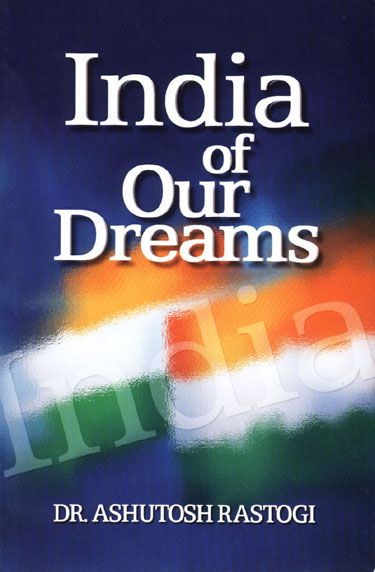Archives
Contribute
|
|
Book Review - India Of My Dreams
|
|
Reviewed by Dr Usha Thakur
05/27/2005
India of Our Dreams by Dr Ashutosh Rastogi
New Delhi: UBS Publishers’ Distributors Pvt. Ltd., 2005
India of Our Dreams
in the hands of visionaries, big dreams, and possibility thinkers will
be a tremendous source of inspiration for action. In the hands of those
whose first instinct is to doubt because they lack the belief and the
ability to visualize a better future, this book will mostly likely go
only as far as getting a cynical response.
Dr
Ashutosh Rastogi, an accomplished scientist, is a doer; not an armchair
intellectual. By writing this book he has given meaning to all those
initiatives that are currently taking place for an environmentally –
safe India, a chemical – free agriculture, and an India
where all the people are healthy. Isn’t that the type of environment we
all aspire for, no matter where we live? If the vision is there and our
will is strong enough then we too can create a ‘America of our Dreams’ – at an individual level that is how empowering this book is. Each one reading India of Our Dreams
will become conscious about the huge impact his / her personal choices
have on their immediate and global environment. Some may even say to
themselves: first, why not make the changes I need to make in my home
and life before asking what anyone else, government, or society can do
for me?
One of the motivations for writing this book stems from the question: what needs to happen in order for India to be a superpower? Dr Rastogi divides the Indian society into three broad groups: First World India (accounting for 1.4% of India’s
population), Second World Hindustan (accounting for 26.7%), and Third
World Bharat (accounting for 71.9%). He argues, and rightly so, that India
can be a superpower only when Third World Bharat is not just the
beneficiary of urban development that houses the majority of First
World Indians and Second World Hindustanis, but the source itself of
profitable (not charitable) development projects. The aim and design of
these projects, according to Dr Rastogi, should be such that everyone
has easy access to clean water, uninterrupted supply of electricity,
good education, integrated holistic farming, well-maintained roads, and
basic healthcare and wellness information as well as facilities. Of
course, such initiatives will require a huge political will at the
level of community, scientists and technocrats, and our governments. No
one entity can implement such a vision. India of Our Dreams is an attempt to bring together all the positive energy of Indians.
The IT group must be wondering why it is not sited as a player in putting India
on the forefront of the world economy. Dr Rastogi points out that IT is
not a growth driver for the country as a whole; it is a mean to an end,
and he is assuming that technology (including IT) will play an
important role in accomplishing the vision he has for India.
India of Our Dreams has come on the scene at a time when India is gaining a high profile in the world economy for its human resources – you may recall there was a time not too long ago when India’s
lack of economic progress was linked to it burgeoning population. It so
heartening to see Dr Rastogi not look for solutions in the reduction of
India’s population per se but in increasing the pace and scope of
industrial and agricultural development in Third World Bharat. Dr Usha Thakur writes from Montreal, Canada
 |
|
You may also access this article through our web-site http://www.lokvani.com/
|
|
